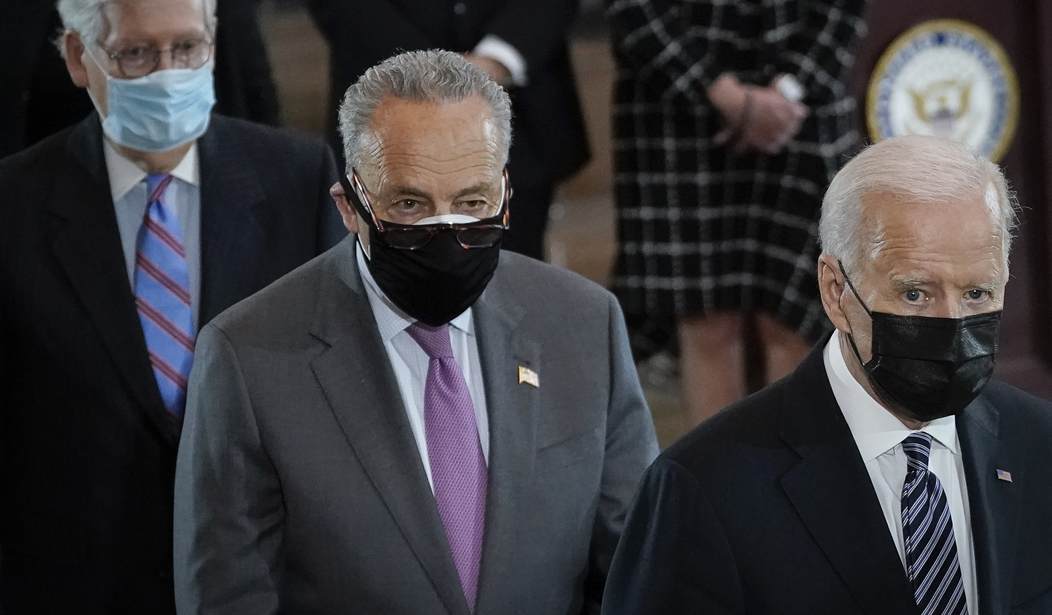It’s long been established that the party in power typically loses seats in midterm elections. But, even until recently, some have speculated that Democrats, despite their razor-thin majority in the House and de facto majority in the Senate, could somehow survive the 2022 midterm elections with their majorities intact—though experts are losing confidence.
The Senate is another story. Back in January, CNN’s Chris Cillizza (who has a terrible record when it comes to political analysis) argued that the 2022 Senate map looked very good for Democrats.
“Republicans will have to defend 20 of their seats while Democrats will have 14 seats of their own on the ballot — after special election takeover wins by incoming Sens. Mark Kelly (Arizona) and Raphael Warnock (Georgia),” Cillizza wrote. “So, the raw numbers favor Democrats. But so, too, does a deeper dive into which actual states are holding Senate races in November 2022. (Yes, we are only a year away from an election year!)”
The recent retirements of Republican incumbents also made the situation look better for Democrats, as it is typically easier to win an open seat than defeat an incumbent. Cillizza concluded, based on the situation at the time, that “Democrats start off the 2022 election with a solid chance of holding onto the majority they won on Tuesday in Georgia. Which would be a massive boost for the Biden presidency.”
Now, he’s starting to worry, and reported Tuesday night that the Senate playing field “just tipped towards Republicans.”
Cillizza points to the recent candidacy of former Nevada Attorney General Adam Laxalt, a Republican, for U.S. Senate, which experts say improves the chance of a Republican pickup in the state.
Curiously absent from his analysis of the 2022 Senate map, however, is the fall of Afghanistan.
He did, however, in a separate analysis, concede what most political experts have acknowledged for a few months now: “Joe Biden’s political honeymoon is over.”
“The shine has worn off Joe Biden,” Cillizza laments. “His average approval ratings is now below 50% in the running averages maintained by 538 (49.3%) and Real Clear Politics (49.6%). […] While polling averages are less-than-a-perfect measure — they take in lots and lots of polling data, of varying degrees of expertise and rigor — they do make clear that Biden has been on a downward trend. Gallup confirms the erosion in Biden’s support; as of late July his approval rating stood at 50%, the lowest of his term to date.”
Cillizza painfully acknowledges that it “seems unlikely that Biden’s somewhat-freefall has stopped just yet.”
Hey, we agree on something!
Between what Cillizza calls Biden’s “somewhat-slow response” and the spike in COVID-19 cases linked to the Delta variant, as well as the “at-times conflicting messages” from the White House, “it seems likely that the President’s approval numbers have not gotten as low as they might over the coming weeks.”
“[Biden] won’t have to face voters until 2024, but many [Democrats in Congress] will be on the ballot in less than 15 months and know that much of their fate lies in how the public perceives the job Biden is doing. At the moment, there’s plenty of reason for concern.”
While Republicans are clearly well-positioned to take back the House, despite the tougher map in the Senate, one can’t dismiss the deteriorating situation here and abroad as affecting multiple races, particularly those in battleground and red states.
The liberal pundits may not be eager to admit it, but as the disasters keep piling up under Biden, Democrats’ hopes of holding the Senate fade away.










